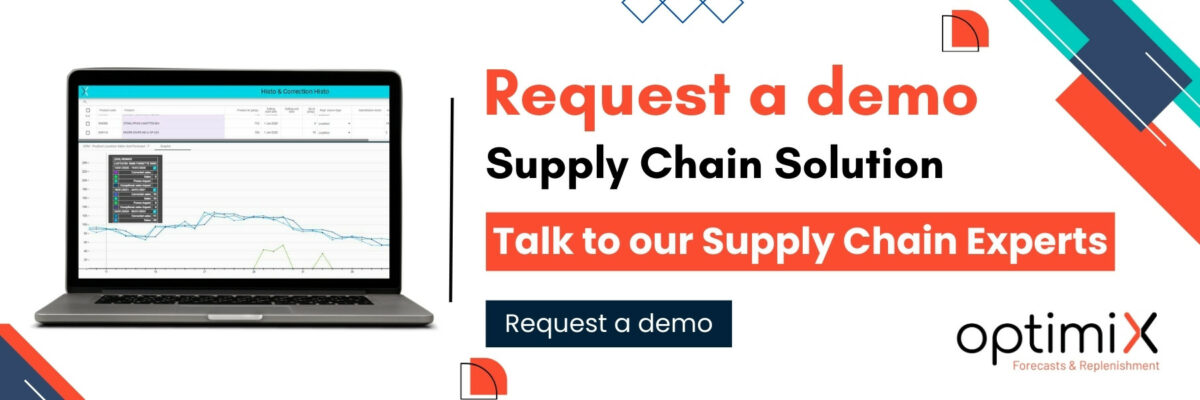Supply chain directors in the retail industry face numerous challenges in managing the complex network of grocery wholesalers and distributors.
These middlemen play a critical role in providing access to a diverse range of products, including perishable items, while ensuring reliable availability to retail, food service, and institutional customers. However, the unique position of these wholesalers exposes them to financial risks and market forces that can impact their profitability and competitiveness.
Amidst these challenges, the potential for AI-driven solutions has never been more relevant. The advent of artificial intelligence is reshaping industries across the board, and supply chain management is no exception.
AI-powered demand forecasting, in particular, stands out as a game-changing tool that enables companies to better predict customer demand, optimize inventory levels, and reduce the risk of stockouts or overstocking. This level of precision is crucial for staying competitive in the fast-paced retail world, where even small inefficiencies can lead to substantial financial loss.
This article explores how demand forecasting can address common wholesale challenges and why it has become a must-have solution for success.
Addressing Heavy Demand from Key Accounts

Wholesalers often serve large accounts that represent a significant portion of their business. Maintaining optimal stock levels and consistently high service levels to these key accounts is crucial to retaining revenue and customer loyalty.
By utilizing demand forecasting based on customer accounts or group-customer levels, wholesalers can gain valuable insights into buying patterns and anticipate demand accurately. This enables them to allocate inventory efficiently, avoid stockouts, reduce carrying costs, and ensure high service levels.
By prioritizing inventory for key customers, wholesalers can strengthen relationships, increase customer loyalty, and enhance long-term business success.
Moreover, demand forecasting facilitates sales planning, allowing wholesalers to identify market opportunities while mitigating risks associated with excess inventory.
Improving Operational Efficiency

To protect investments and margins, wholesalers must address inefficiencies in their operations and buying processes. A machine learning-powered demand forecasting tool provides accurate and automated insights to optimize stock levels, ensuring they meet customer demand effectively.
Enhancing supply chain visibility
Real-time visibility into the supply chain is another substantial benefit of incorporating AI. Advanced tracking systems monitor products from their point of origin to their final destination. This transparency helps companies promptly identify and address issues like shipping delays or quality problems, minimizing disruptions. Improved visibility not only enhances operational efficiency but also builds trust with customers by ensuring reliable delivery timelines.
Reducing operational costs
Cost reduction is a critical aspect of operational efficiency, and AI contributes significantly in this area. Accurate demand forecasting leads to optimized inventory levels, reducing the carrying costs associated with storing surplus stock. AI also streamlines transportation by optimizing routes, which cuts down on fuel consumption and lowers transportation expenses. In warehouses, AI-powered automation optimizes storage layouts and handles repetitive tasks, reducing labor costs and increasing overall productivity.
Promoting sustainability
AI technologies also support sustainability efforts by optimizing resource utilization and minimizing waste. Efficient route planning reduces carbon emissions by cutting unnecessary travel, and smarter inventory management lessens the likelihood of overproduction and waste. Predictive maintenance powered by AI extends the lifespan of equipment, further contributing to eco-friendly practices within the supply chain.
Enhancing Labor Management

In wholesale and retail operations, managing the workforce efficiently is often a complex task, made even more challenging by workforce shortages, high turnover, and rising labor costs. To address these issues, aligning labor management with demand is crucial for enhancing operational efficiency.
AI-driven solutions for smarter workforce allocation
AI-powered demand forecasting provides a powerful tool for improving labor management. By analyzing historical sales trends, upcoming shipments, and other relevant data, these solutions enable businesses to predict demand more accurately. This allows for better workforce scheduling, ensuring that employees are available when needed and helping to reduce unnecessary labor costs during slower periods.
The impact of technology on labor costs
Labor is one of the largest expenses in warehouse and distribution operations. Many businesses are turning to labor management software to track, measure, and plan workforce activities. These tools provide insights that help improve efficiency, reduce operating costs, and better manage the workforce based on real-time data and forecasts.
Tackling common workforce challenges with AI
Companies also face challenges such as unplanned absences, seasonal demand fluctuations, and employee dissatisfaction. An engaged workforce is crucial to maintaining productivity. AI-driven labor management not only improves scheduling accuracy but also creates a more balanced work environment, reducing stress and burnout. This approach leads to higher employee engagement, which can significantly impact operational success.
The Necessity of Demand Forecasting
Inefficiencies in the supply chain are no longer tolerable, given heightened customer expectations and rising costs. Demand forecasting has become a must-have solution for wholesalers and distributors to combat wastefulness and mitigate risks.
By adopting AI-driven solutions, these industry players can achieve significant improvements, such as reducing food waste, enhancing service levels, improving operational efficiency, and reducing order processing times. Outdated manual planning processes are no longer suitable for the crucial role wholesalers play in the supply chain.
Demand forecasting provides the necessary insights and actionable data to optimize operations, enhance profitability, and ensure long-term success.
----------------------------
Supply chain directors in retail must recognize the importance of leveraging technology, particularly AI-driven demand forecasting platforms, to address the challenges faced by grocery wholesalers and distributors.
By effectively managing heavy demand from key accounts, improving operational efficiency, and enhancing labor management, wholesalers can optimize their supply chain operations and achieve sustainable success. Demand forecasting has transitioned from a good-to-have tool to a must-have solution, offering tangible benefits such as reduced wastefulness, improved service levels, enhanced operational efficiency, and streamlined order processing.
Embracing demand forecasting empowers wholesalers to navigate the complexities of the retail industry, maintain a competitive edge, and meet the evolving needs of customers and the market.







